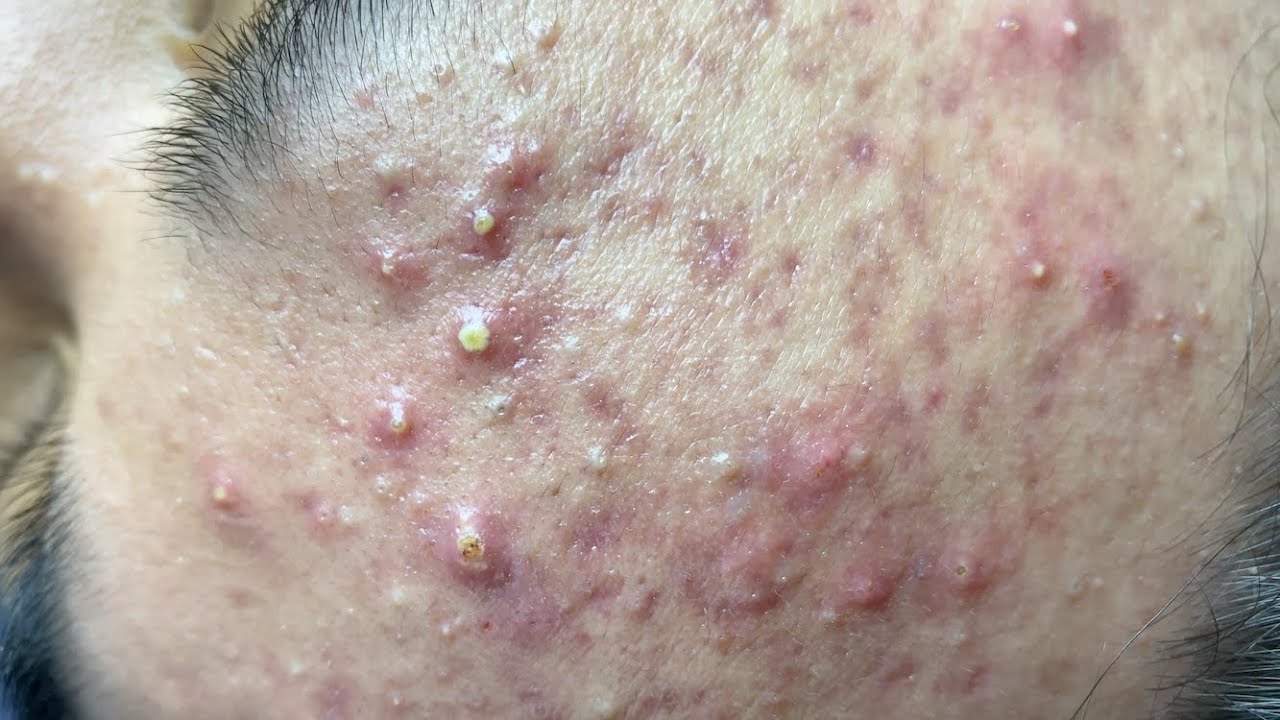Click Button Play To Watch Full Video 👇👇
Acne is a common skin condition that many people face, and its location on the body can provide valuable insights into underlying health issues. Dermatologists believe that where acne appears can indicate various factors, including hormonal imbalances, lifestyle choices, and environmental influences. Understanding these patterns can help in managing and treating acne more effectively.
Forehead
Acne on the forehead is often associated with stress and hormonal changes. This area, part of the T-zone, tends to produce more oil due to the presence of numerous sebaceous glands. High stress levels can increase cortisol, leading to more oil production and clogged pores. Additionally, the use of hair products or hats can contribute to breakouts. To combat forehead acne, it’s important to manage stress through techniques like mindfulness or yoga and to maintain a proper skincare routine that includes regular cleansing.
Nose
Acne on the nose can indicate issues related to digestion or increased stress levels. The nose has many oil glands, making it susceptible to breakouts. Hormonal fluctuations, particularly in women, can also lead to acne in this area, especially during menstrual cycles. A healthy diet rich in fruits, vegetables, and whole grains can support digestion and skin health. Regular exfoliation can help remove dead skin cells and prevent clogged pores.
Cheeks
Breakouts on the cheeks can often be attributed to environmental factors such as pollution, irritants from makeup, or contact with dirty surfaces like cell phones. Cheek acne may also signal respiratory issues or allergies. For effective management, keep the skin clean and consider using non-comedogenic makeup products that won’t clog pores. Regularly cleaning items that touch your face, like phone screens and pillowcases, can also help reduce the risk of breakouts.
Chin and Jawline
Acne on the chin and jawline is frequently linked to hormonal fluctuations, especially in women. Conditions like polycystic ovary syndrome (PCOS) can lead to increased levels of androgens, resulting in acne in these areas. Diet plays a role as well; high intake of dairy and refined sugars can exacerbate breakouts. To address chin and jawline acne, consider dietary changes and consult with a healthcare provider about hormonal treatments that may be appropriate.
Back and Shoulders
Back acne, often referred to as “bacne,” is typically caused by friction from clothing, sweat accumulation, or hormonal changes. This area is often overlooked but can be a significant source of discomfort. To manage bacne, wear loose-fitting clothing that allows the skin to breathe, shower after sweating, and use body washes formulated to treat acne. Maintaining good hygiene and keeping the skin dry can help reduce breakouts.
Conclusion
Acne can be frustrating and may affect self-esteem, but understanding its location can provide important clues about underlying health issues. From hormonal imbalances and dietary factors to environmental irritants, various factors contribute to where breakouts occur. If you’re struggling with persistent acne, consulting a dermatologist can help you identify root causes and develop an effective treatment plan. By addressing both the symptoms and underlying issues, you can work towards achieving clearer, healthier skin and enhancing your overall well-being. Knowledge of your skin’s signals is a powerful tool in your journey to better health.

дизайнерская мебель для ванной комнаты дизайнерская мебель для ванной комнаты .